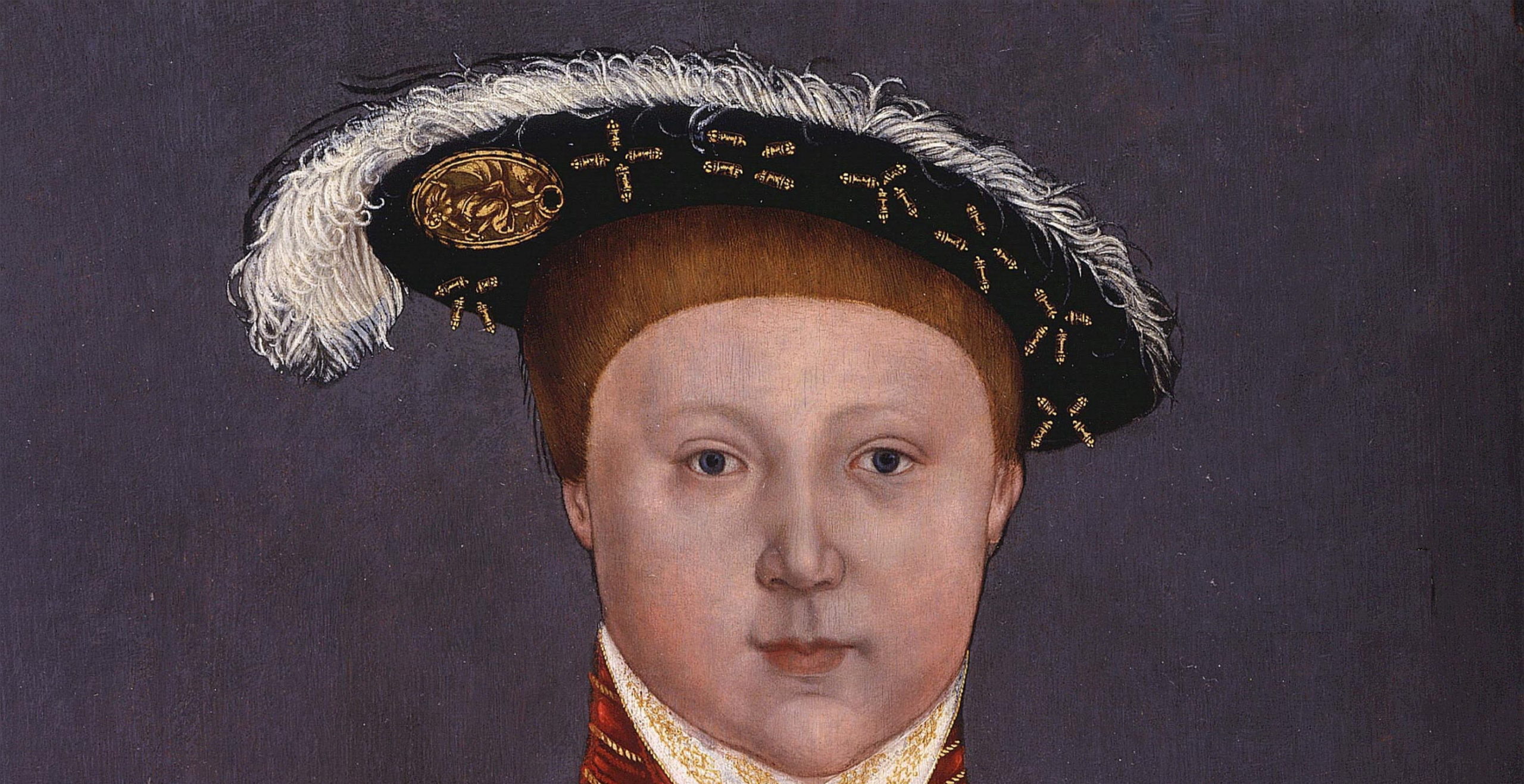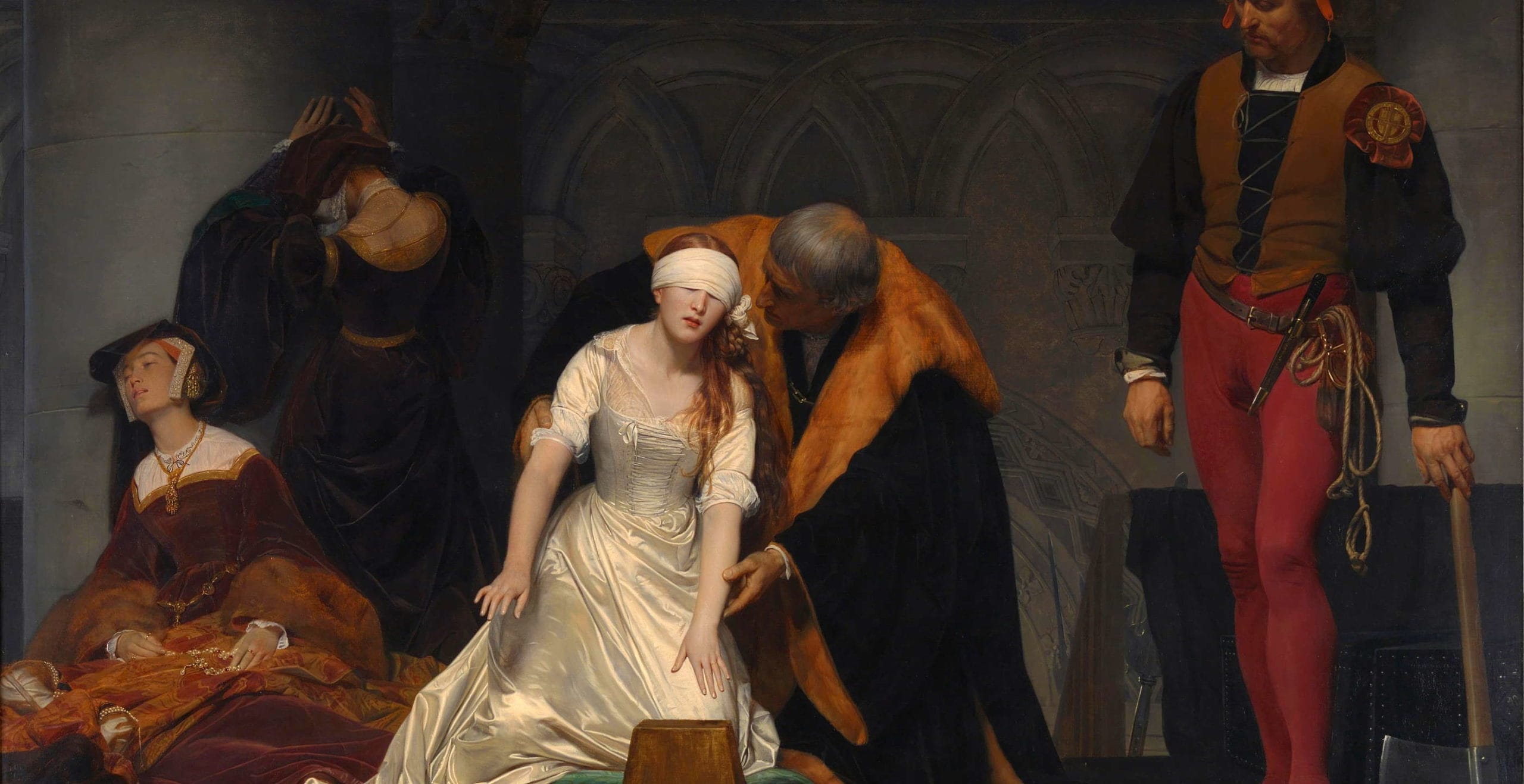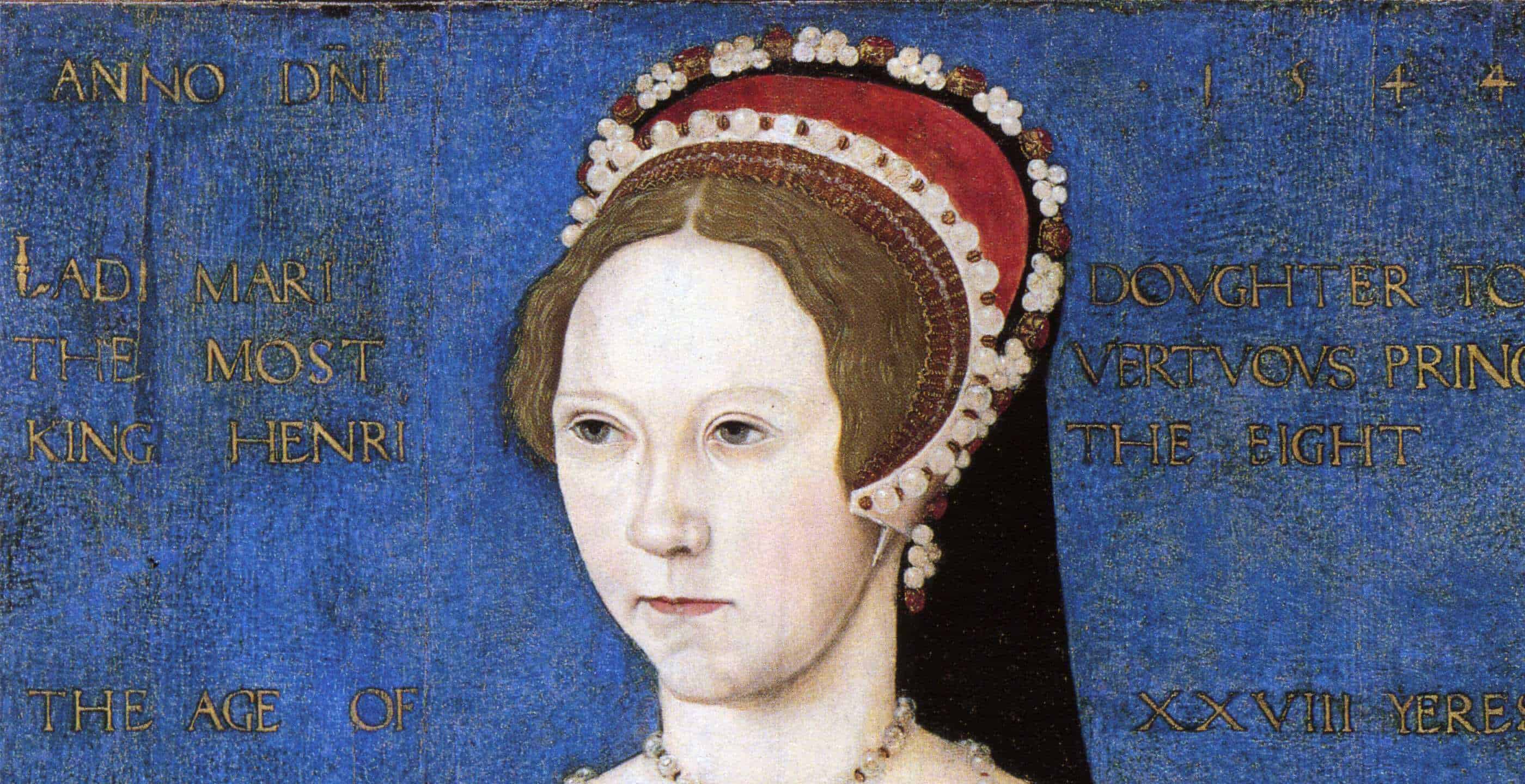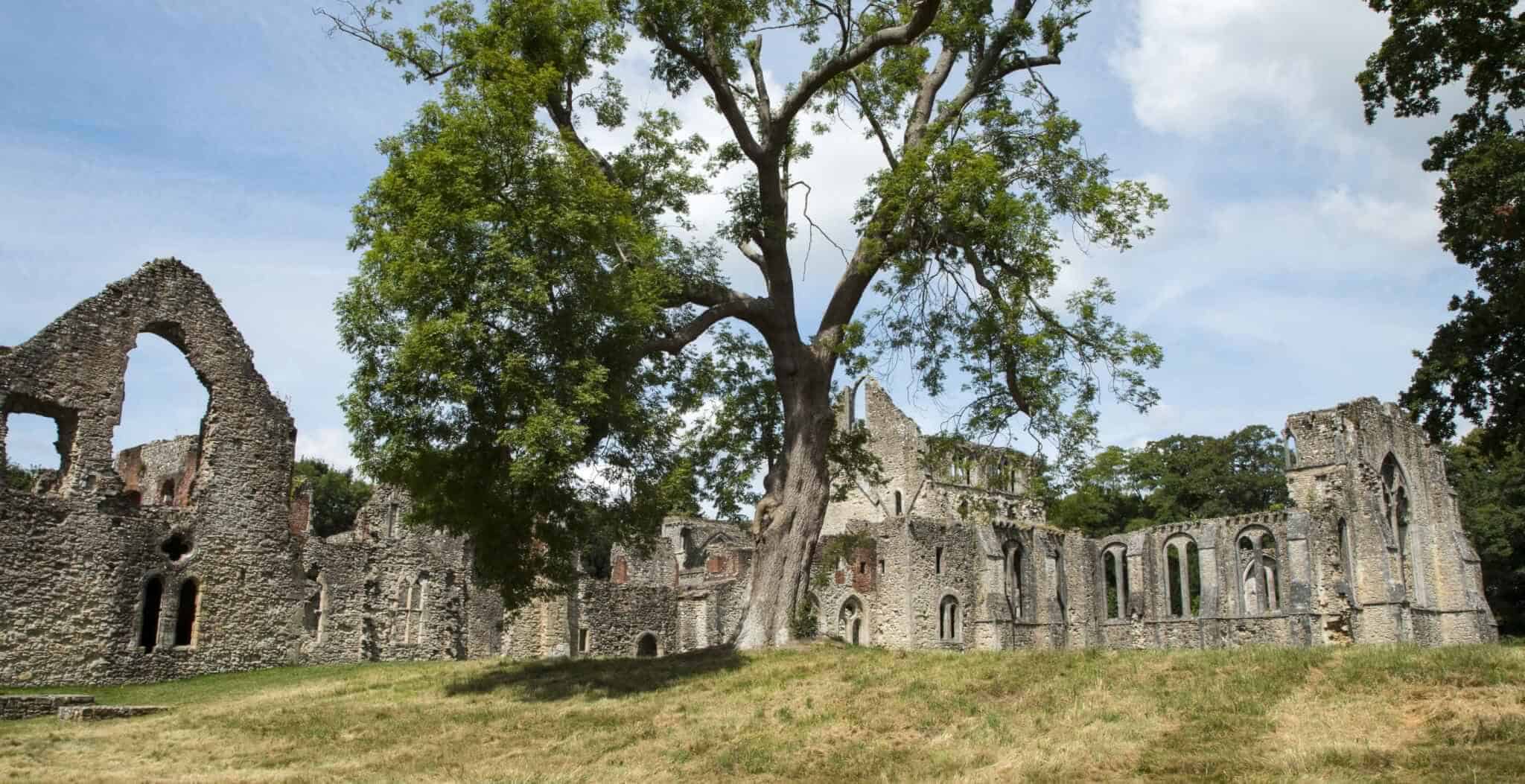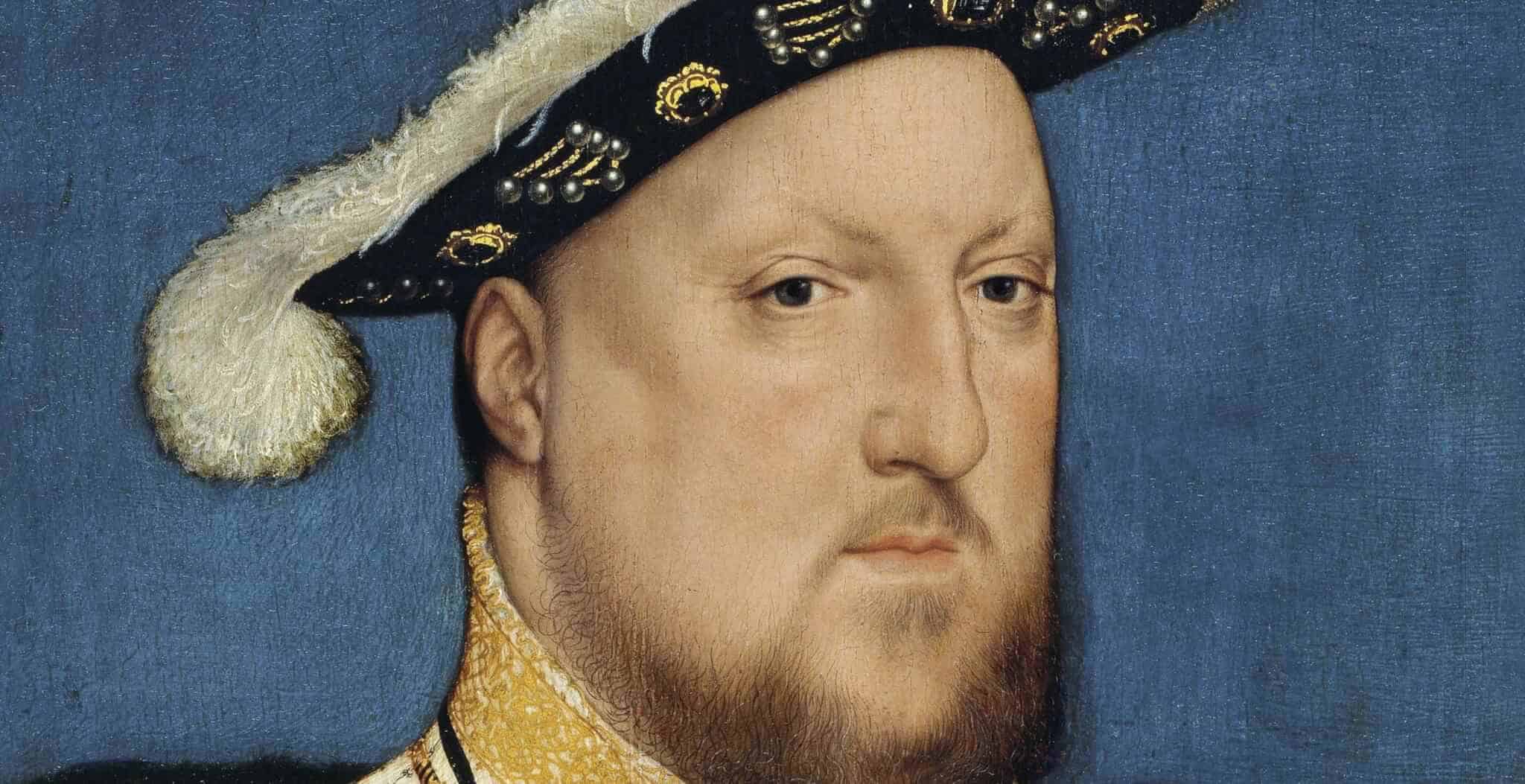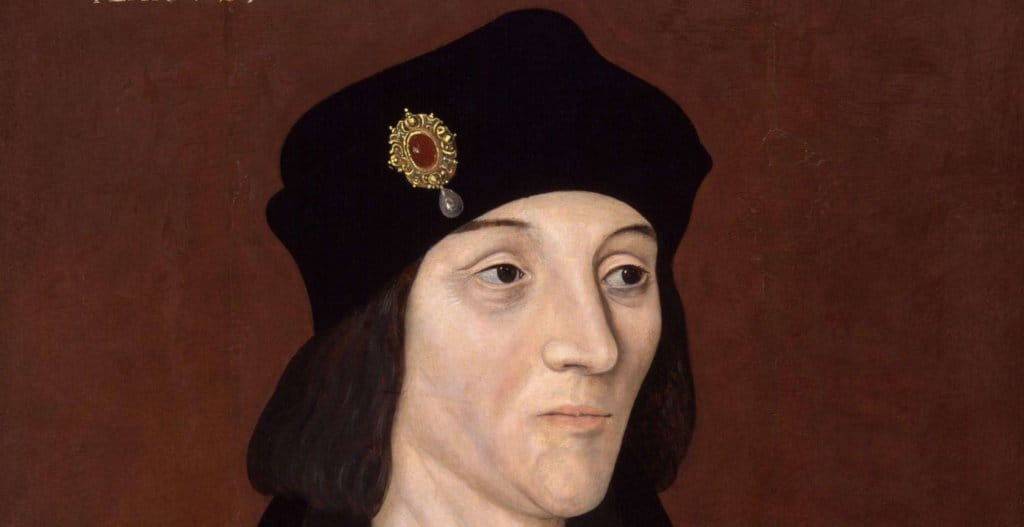One of the most famous Kings of England, perhaps one that epitomises the Tudor period the most, was Henry VIII. His reign was dominated by the Reformation which shared the spotlight with his tumultuous and well-documented private life.
His son and heir, young Edward, son of Jane Seymour looked set to be inheriting a disjointed and divided legacy from his father. King Henry VIII knew that before his death he needed to unite the different factions that were jostling for power, so that Edward’s inheritance would not be the continued infighting and factionalism that had dominated his reign.
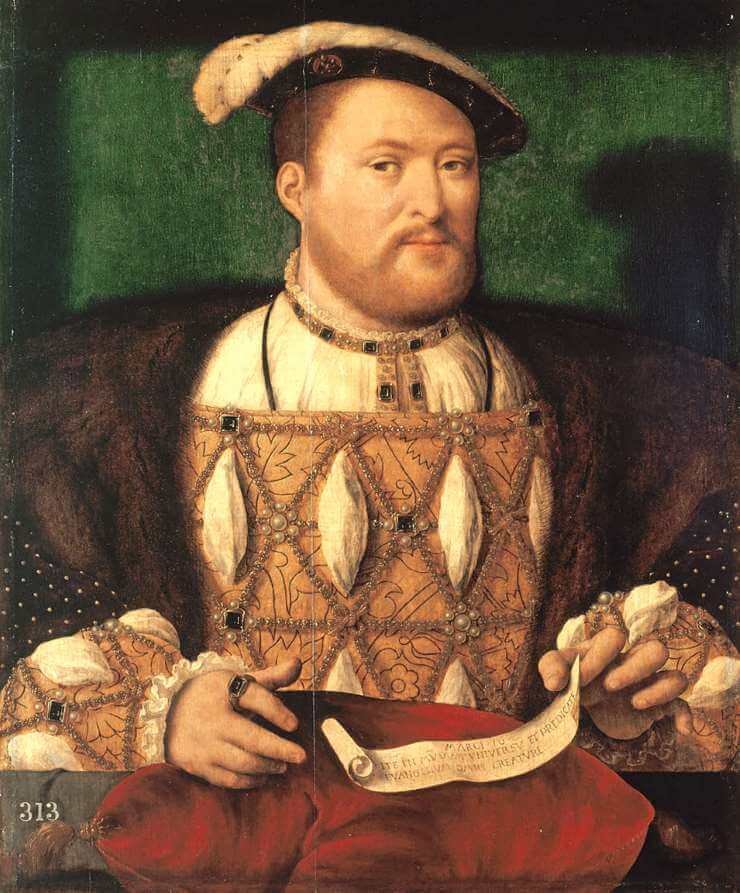
Unfortunately, his pleas for unity were too late and on 28th January 1547 he passed away.
With Henry VIII’s infamous reign now over, Edward at the age of nine was now the new king.
Whilst Henry VIII was laid to rest at Windsor alongside Edward’s long since deceased mother, Jane Seymour, four days later Edward became Edward VI in a coronation ceremony at Westminster Abbey.
The Archbishop Thomas Cranmer presided over the ceremony declaring Edward the leader of the Church of England, destined to continue the difficult and complex process of the Reformation.
With Edward now formally king however, his youth would mean that power would reside in a council that would, until he came of age, make the decisions.
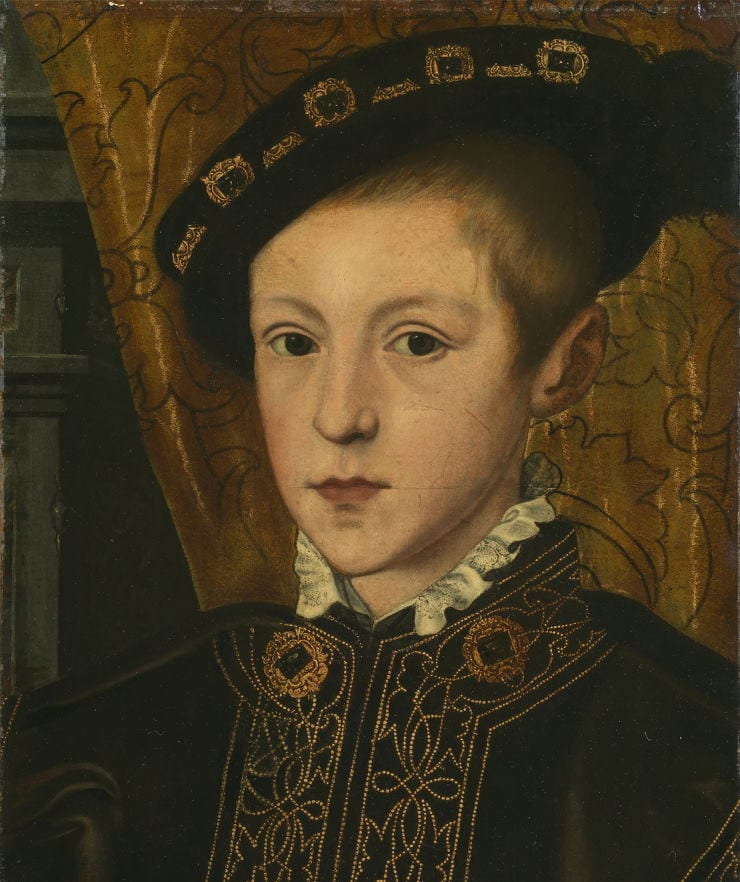
Only a few months earlier, whilst Henry VIII was on his deathbed, a new will and testament had been produced, however such a document resulted in controversy and speculation as Henry’s signature was the work of a scribe rather than his own.
In this context the will would be easy to contest and remain under scrutiny as the men gathering around Henry saw fit to control the new young monarch Edward.
One of the principal characters who would rise to the occasion was Edward’s own uncle, Edward Seymour, the self-styled Duke of Somerset who would also serve as the Lord Protector until Edward was older.
Such an arrangement however, had not been agreed by Henry, who believed that a Protector held too much power and instead arranged for a “Council of Regency” to be appointed. Nevertheless, only days after Henry’s death, Edward Seymour was able to seize power, with thirteen out of the sixteen executors agreeing to his role as Protector for Edward VI.
Edward Seymour’s power grab was successful, his popularity and previous military successes held him in good stead and by March 1547, he had obtained letters patent from Edward VI giving him the right to appoint members to the Privy Council, a monarchical right which essentially gave him power.
With the power behind the throne held by Edward Seymour, what could be said of the figurehead, nine year old Edward?
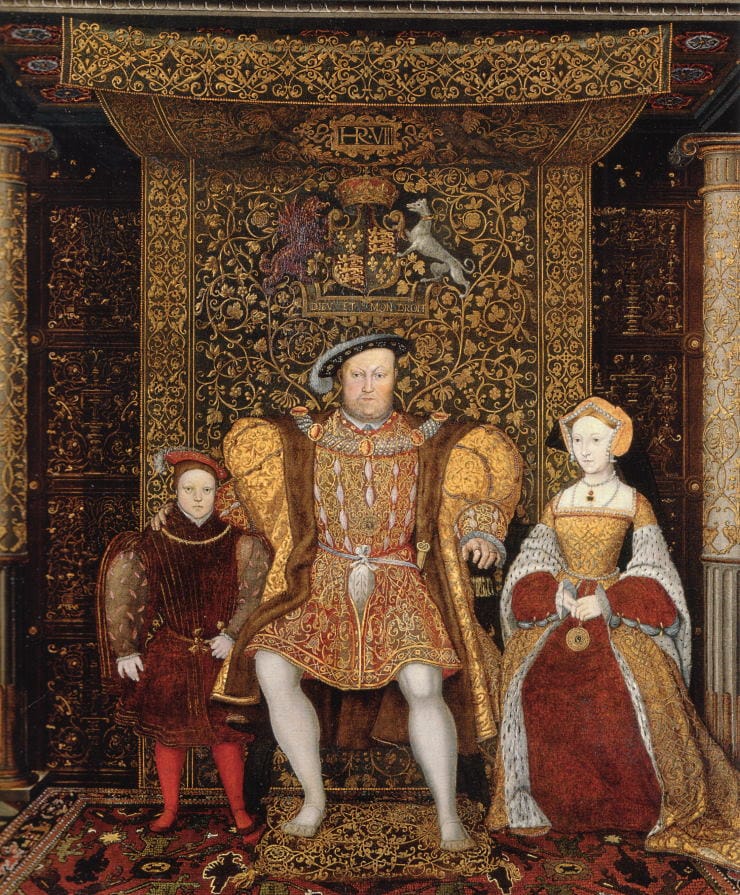
Born on 12th October 1537, he was the only legitimate son of Henry VIII, born to his third wife, Jane Seymour who sadly died only a few days after his birth.
Without his mother, he was placed in the care of Lady Margaret Bryan, whilst Henry doted on and invested in securing the future of his son and heir.
Edward was given comfort, a good education and luxury, trained in typical medieval kingship skills such as riding and fencing. He was also given a well-rounded education, learning both Latin and Greek by the age of five.
In terms of his personal relationships, Edward had become close to Henry VIII’s wife Catherine Parr and was influenced by her Protestant ideals. Meanwhile, he had grown close to his sisters, both Elizabeth and Mary, although Mary’s Catholicism would bring distance to their relationship later.
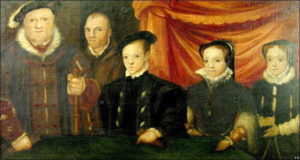 King Henry VIII, his children Edward, Mary and Elizabeth, and his jester Will Somers
King Henry VIII, his children Edward, Mary and Elizabeth, and his jester Will Somers
The religious divide between Catholicism and Protestantism would permeate Edward’s short six year reign as despite his father’s break from Rome residual elements of Catholic worship still existed whilst the new Protestant doctrine was introduced.
Nevertheless, Edward was a devout Protestant and embraced it wholeheartedly.
Aside from the Reformation, Edward found his reign marred by continued conflict with both Scotland and France as well as economic issues.
Under the Lord Protector, the war which had pervaded Henry VIII’s reign would look set to continue, with the principal aim of implementing the Treaty of Greenwich which had been signed in 1543 with two main goals, establishing peace between Scotland and England as well as securing the marriage of Edward VI and Mary, Queen of Scots.
At the Battle of Pinkie in September 1547, held on the banks of the River Esk, the English forces would secure a blinding victory against the Scottish. It would be the last pitched battle between the two before the Union and became well-known thanks to an eyewitness account that was published.
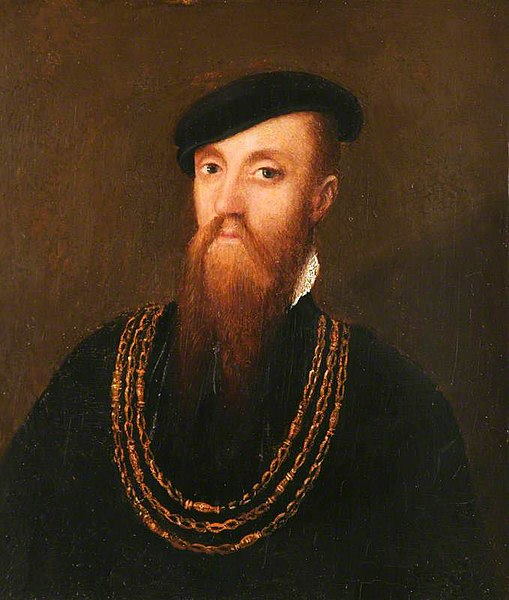
The defeat for the Scots became known as “Black Saturday” and resulted in the young Queen Mary being smuggled out of the country. She would be betrothed to the Dauphin of France. Edward Seymour saw fit to occupy large parts of Scotland.
His choices however would prove to be detrimental to the cause, as such an occupation weighed heavily on the Treasury finances. Moreover, such a victory ultimately drove the Scottish closer to England’s other enemy, France, and the next summer the French king, in support of Scotland sent around 6,000 troops and declared war on England.
Seymour’s foreign policy was close to collapsing, bringing unity and a sense of purpose to England’s enemies as well as draining the Treasury.
Meanwhile, another central goal during Edward VI’s time as monarch was the establishment and implementation of the Protestant church. This was pursued with a rigour and voracity by the Archbishop of Canterbury, Thomas Cranmer.
Cranmer’s Protestant ambitions were really beginning to take shape and by July 1547, established forms of Catholic worship were banned.
The enforced iconoclasm of the period resulted in a sweeping prohibition of typical Catholic idolatry such as bell ringing, stained glass windows, painting and decoration. Under the Act of Uniformity, these measures were legally enforceable and marked a swift and decisive move towards Protestantism.
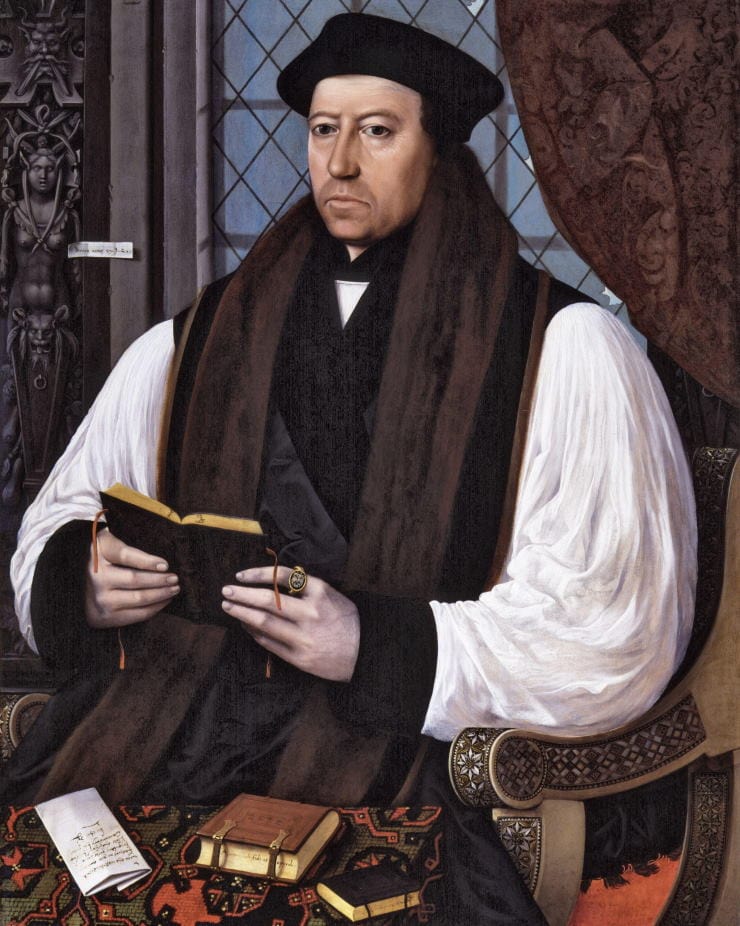
Whilst England remained in a state of religious transition, social unrest began to breed, particularly with the publication of Cranmer’s ‘Book of Common Prayer’ which resulted in an uprising in the West Country. The Catholic defence even led to the city of Exeter being besieged whilst across the country in East Anglia, more social drama was unfolding in the form of land enclosures.
This was the beginning of the end for Edward Seymour, with peasants rising up in defiance of their landowners, resulting in the Kett’s Rebellion of 1549, whereby a group of rebels amounting to almost 20,000 stormed the city of Norwich.
Later that year, Somerset was visibly losing support from the council. Religious controversy, economic weakness and social discontent would ultimately bring an end to Edward Seymour’s autocratic governance.
In October 1549 a coup was initiated by John Dudley, the 2nd Earl of Warwick which resulted in the successful expulsion of Seymour from office.
With Seymour out of the way, Dudley now declared himself the Lord President of the Council and by the beginning of 1550 was the new man in central authority. Dudley, with a new title of the Duke of Northumberland dealt with the grievances spilling over from Seymour’s time, dealing with the conflicts with Scotland and France.
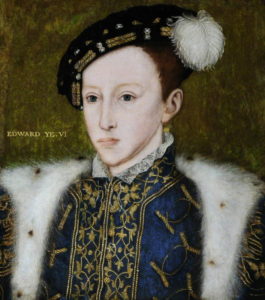 Edward VI
Edward VI
Meanwhile, what could be said of young King Edward VI?
By this point he was now fourteen years of age and showing clear signs of rapidly declining health. With no heirs and no prospect of him being able to produce heirs, his successor was destined to be his sister Mary.
There of course was only one slight problem with such a prospect: she was a devout Catholic.
Suddenly, a chaotic scene presented itself at the prospect of newly reformed England having all of its policies reversed by a Catholic Queen.
Dudley, the Duke of Northumberland realised that simply disinheriting her on the grounds of illegitimacy would also result in Elizabeth facing the same fate although she was Protestant.
Instead Dudley made alternative arrangements in the form of Lady Jane Grey, the 15-year-old granddaughter of Henry VII’s daughter Mary. In a move of ever-increasing political ambition, he made sure to arrange an advantageous marriage for his son, Guildford Dudley who was to be married to Lady Jane, the future queen.
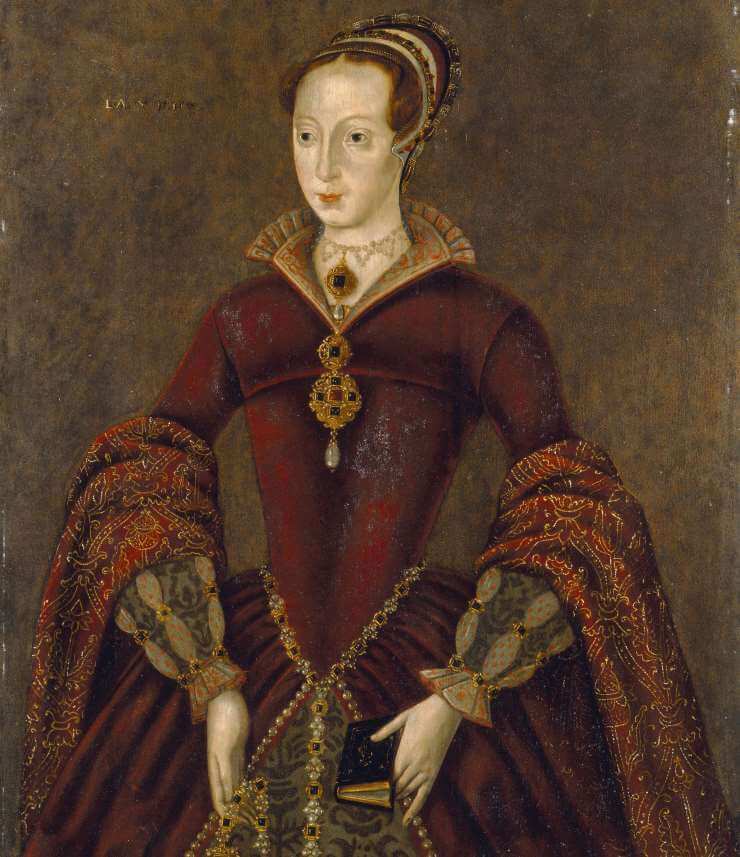
Edward VI was thus consulted on this new plan which he agreed to, naming Lady Jane Grey as his successor in a document called “My devise for the Succession”.
After some initial controversy, the document was signed by several members and passed on to parliament.
Edward in the meantime was deteriorating rapidly, summoning his sister Mary before he died. Nevertheless, Mary, sensing that this was a trap, chose to travel to her estates in East Anglia.
On 6th July 1553, at the age of fifteen King Edward VI died, leaving Lady Jane as his successor, a fate that would see her reign last for just nine days.
Edward VI, the boy king, a monarch with a famous and imposing father, was never able to attain real power as king. His reign was dominated by others, symptomatic of the power-plays and infighting dominating the court. Edward VI was a figurehead, nothing more, in a time of great change.
Jessica Brain is a freelance writer specialising in history. Based in Kent and a lover of all things historical.
Published: January 28, 2021.
